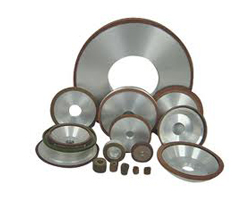In this article, you will learn about the CBN Grinding Wheel and its characteristics. The article will also discuss how these wheels work, how expensive they are, and how durable they are. There are many advantages to these wheels, and you can choose the best one for your needs based on your specific applications. So, if you’re in the market for a new grinding wheel, read on! You’ll be glad you did!
Characteristics of CBN Grinding Wheel
When choosing a grinding wheel, you should know what to look for in a CBN grinding wheel. The material that encases the CBN particles is called the bonding material, which also makes up the wheel. The bonding material can affect the grinding process if it is not bonded properly. It must be able to hold the abrasive particle in place and wear at a proper rate. It must also be able to transfer heat away from the grinding area.
When comparing the wear patterns of two different CBN grinding wheels, we found that some wheel generates deep scratches, while some CBN wheel produces an uneven distribution. One kind of CBN wheel has a large distance between the edges of its abrasive grains, which results in a larger level of surface roughness. In contrast, the other CBN wheel’s surface roughness is smooth and uniform, indicating that there is no obvious difference in grain height from the other two wheels. These characteristics indicate that the CBN wheel is stable in its grinding process and that it does not suffer from premature wear.

CBN Grinding Wheel Applications
A CBN grinding wheel is an excellent choice for high-speed grinding because it has a high hardness and can sharpen tools with minimal force. These wheels can be used in a single-pass or creep-feed mode, with the feed rate reduced when the work is dry. Typically, roughing cuts are 0.002 inches deep while finish cuts are 0.005 inches deep or less. CBN grinding wheels do not require spark-out passes, and the depth of cut is determined by the settings on the grinder.
The grinding wheel is electroplated with a small groove in the center to protect the clamping part during the process. During electroplating, the grinding grains must be strong, hard, and resistant to high temperatures. In addition, the CBN wheel is capable of retaining particle shapes and is ideal for super-hard-to-cut materials.
Cost of CBN Grinding Wheel
The cost of a CBN grinding wheel varies widely. It is dependent on factors such as the CBN concentration, the size of the wheel, and the thickness of the abrasive layer. You can also choose to reuse the core of the wheel. However, some technologies don’t allow for this. In that case, the wheel is less expensive than a conventional one. Here’s how to calculate the cost of a CBN grinding wheel.
CBN grinding wheels are available in two main types: metal bonds and synthetic resin bonded. Metal bonds have high infeed forces and are generally used only for wet grinding. While they are also suitable for dry grinding, their high grain exposure limits their use for profile grinding. Other types of CBN grinding wheels are not very expensive and can increase your production efficiency.
CBN Grinding Wheel Durability
One way to measure the durability of CBN grinding wheels is to observe how much material the wheel can remove. The abrasive grains on the surface of the CBN wheel are nearly 50 times harder than the aluminum oxide abrasives. These properties make CBN wheels especially suitable for grinding high-speed tools, such as cutting wheels. The CBN wheels are durable, resulting in long wheel life and high material removal rates with minimal thermal damage to the grinding tool and the ground. CBN grinding wheels also produce burr-free cutting edges without losing their hardness. They also offer easy control of tool size and shape.
Concentration Ratio of CBN Grinding Wheel
The concentration ratio of a CBN grinding wheel is a measure of the amount of grit in the mix. A concentration of 75 or more is ideal. However, the concentration ratio is not an absolute standard, as certain jobs may require lower concentrations. Although a higher concentration will last longer, it will cost more up-front. Below are some common concentration ratios:
The grit size is a major consideration when choosing the proper grinding wheel. A coarser grit size will allow greater material removal, while a finer grit will allow smoother surface finishing. The abrasive grain concentration of a CBN grinding wheel is also a factor to consider. For instance, high concentrations are ideal for profile and mass production grinding operations. However, low concentrations are appropriate for fine grits in the face and profile grinding applications.
The Bottom Line
The CBN wheel is superior in performance to diamond superabrasives. Diamonds lose their hardness over a wide temperature range, but CBN maintains its hardness even under extreme heat. Hence, it is an excellent choice for grinding steels and other ferrous materials. In addition to allowing for greater material removal, CBN can also be used to sharpen glass and ceramics. Moreover, it has higher hardness than diamonds, which makes it ideal for sharpening steels, as well as for cutting glass and ceramics.



